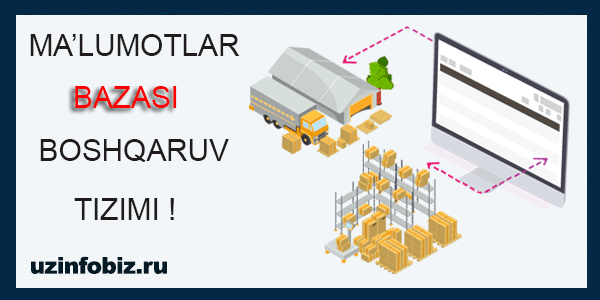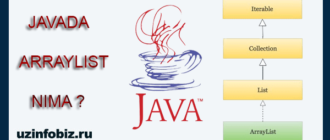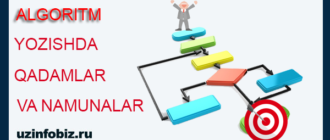Hi guys! I am glad to see you again, this article will be about database management system. In the field of software, it is considered very important to study the database management system.
Database management system (in English – Database Management System – abbreviated “DBMS”) is a software system for creating and managing databases. A database provides users and programmers with a systematic way to create, retrieve, update, and manage data.
A DBMS allows users to create, read, update, and delete data in a database. A database basically acts as an interactive service between the database and the users or application programs, so that the data is systematically organized and easily accessible.
ATTENTION ADVERTISEMENT! A video course on Java programming languages is ready. You can read information about the video course by clicking on the image below:
A database manages three important things: data, a database engine that allows data to be accessed, locked, and changed, and a database schema that defines the logical structure of the database.
These three key elements provide balance, security, data integrity, and unified governance. Typical database management tasks supported by a DBMS include change management, performance monitoring/tuning, and backup and recovery. Most database management systems are also suitable for automated processing, restart and recovery, as well as activity management.
A DBMS is most useful for providing a centralized view of data that can be retrieved from multiple locations in a manageable manner by a large number of users. A DBMS can restrict how a user can see the data, providing multiple views of the same database schema.
Users and software programs are free to know where the data is physically located or what type of storage media it is because the DBMS handles all the requirements itself.
A DBMS offers logical and physical data independence. That is, users and applications do not need to know where the data is stored or changes in the physical structure of the data. Programs use the application programming interface (API) for the database provided by the DBMS, so that programmers do not have to change programs just because changes are made to the database.
Popular types of DBMS
Popular database models and their management systems include:
Relational Database Management System (RDBMS) – Adaptable for most use cases, but Tier-1 RDBMS products can be very expensive.
A NoSQL DBMS is ideal for loosely defined data structures that can evolve over time.
In-memory database management system (IMDBMS) – provides faster response times and better performance.
Columnar (columnar) database management system (CDBMS) – well suited for data warehouses with a large number of similar data elements.
Cloud Database Management System – Cloud service providers are responsible for providing and executing the DBMS.
Advantages of DBMS
Using a DBMS to store and manage data comes with benefits, but also comes with additional costs. One of the biggest advantages of using a DBMS is that it allows users and application developers to access and use the same data while managing data integrity.
A database (DBMS) provides a central storage of data in a manner controlled by multiple users.
Centralized data storage and management with a DBMS includes:
Data collection and independence.
Information security.
Lock mechanism for simultaneous access.
An efficient task manager to balance the needs of multiple applications using the same data.
The ability to quickly recover from breakdowns and mistakes.
Strong data integrity capability.
Activity monitoring and verification.
Simple access using a standard application programming interface (API).
A single management procedure for data.
A DBMS also provides multiple views of a single database schema. A view is what information the user sees and what it is defines how the viewer sees the data.
If a DBMS is used, systems can change very easily as system requirements change. New categories of data can be added to the database without disrupting the existing system, and applications are isolated from how the data is structured and stored.
Of course, the DBMS has to do extra work to provide these advantages, and it also incurs additional costs. A DBMS uses more memory and CPU than a simple file storage system. And, of course, different DBMSs require different types and levels of system resources, so it’s important to know the types and categories of DBMSs.
Instructions about this will be given in the following articles. SUBSCRIBE to my blog and you will be notified when such articles are published.
If you have any questions about the article, leave a comment, and see you in the next article!






